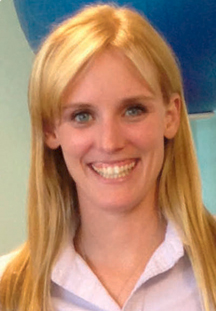There is a new approach to physical therapy following stroke

There is some new evident coming from Washington University in Missouri that I would like to share with all readers this month. This research considers new ways to help rehabilitate a patient who has suffered from a stroke. Typically A stroke occurs when either a clot or rupture in a blood vessel in the brain blocks the blood supply and stops the affected area from receiving the oxygen and nutrients that it needs to keep cells alive and working. Every year, around 140,000 people die from stroke in the United States, where it accounts for 1 out of every 20 deaths. The estimated cost of stroke — including medical care, drugs, and missed work days — is around $34 billion per year. Traditionally physical therapy after a stroke will consist of individuals receiving devices and therapeutic exercises, and interventions that help them to compensate for the disability. Constraint induced physical therapy was widely popular thirty years ago but has somewhat faded out of use. Constraint induced therapy is an approach involving tying the health limb down so the brain has to fire signals to the involved limb trying to get some recovery to occur and some function to resume if the limb was paralyzed due to the stroke.
The new approach is based on a different thinking of the brain and it’s ability to participate in the outcome. Current research is suggesting that we may be able to stimulate [stroke] recovery by temporarily vacating some brain real estate and making that region of the brain more plastic.
There are more than 6.5 million stroke survivors in the U.S. Thanks to the brain’s plasticity, or ability to adapt, many survivors naturally recover some amount of function. An example is a survivor who cannot move an arm at first but finds that a few days later, they can start to wiggle their fingers. If health care providers can begin to think of the brain function following stroke in a different light it maybe possible to recover more function then previously thought. The extent of recovery is closely linked to how well the brain remaps sensory and control functions from the damaged to the undamaged area.
The approach that is begin suggested is referred to as sensory deprivation. It is often used in pediatric physical therapy with children who fall on the autistic spectrum. Sensory deprivation might be a way to free up real estate near a stroke-injured area, and if the brain would use this opportunity to remap the disabled functions to that area. Years past the thinking physical therapists used was that if motor function was gone from a limb the body would have to rely more heavily on the other senses, sight, hearing, touch and those senses would become dominate and stronger to make up for the lacking function. Now health professionals are being encouraged to treat a stroke different. Instead of working with the other senses if we restrict the other senses the brain will be forced to rewire and allowing the brain to come up with its own plan for attack and lead to a stronger more effective recovery. It sounds counter intuitive, why would we cover up a patients eyes when they are trying to learn to use there arm again? Wouldn’t that make recovery harder? Well yes and no. By not allowing the brain to use its other senses to assist recovery will be so hard. So hard that the brain has to find another way and it will with time and repetition. This is exciting for all stroke patients.
This approach to rehab following a stroke has the potential to change many peoples lives. There is much more research that still needs to be done. Currently studies on animals show promise but there have been no human studies with large enough patient samples to make this new thinking approach a hard and fast technique. This is exciting for the future of physical therapy and I hope you have enjoyed reading about how the brain can remap itself if restricted sense are applied.
As always, yours in Healing,
Dr. Rachel Lys, DPT
631-668-7600 EastHamptonPhysicalTherapy.com

